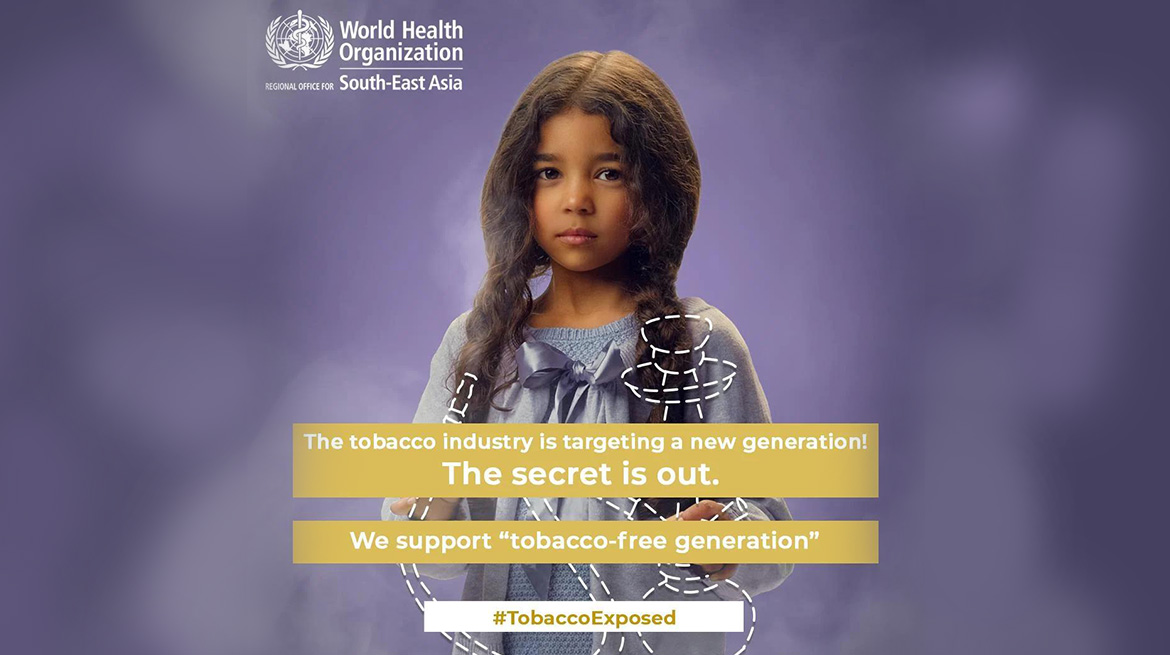It’s the 1960s. A tobacco industry conglomerate approaches an advertising firm in New York, worried about a recent study linking smoking to lung cancer. The FDA issued guidelines against cigarette advertising, and public opinion was turning against tobacco products. Sales were at risk, and the conglomerate needed a strategy to maintain its market. A simple tagline, “We toast it!” became their breakthrough, subtly convincing consumers that their tobacco was different.
This is just an example of how the tobacco industry has relentlessly refuted scientific evidence.
The industry includes manufacturers, distributors, and advertisers, all working together to downplay the harmful effects of tobacco. In India, tobacco was introduced by the Portuguese in the 17th century and quickly became a significant economic and political force, providing employment and tax revenue1.
For years, the tobacco industry has used innovative tactics to shift the blame from the substance to the user. They have convinced the public that moderation and internal control are key, despite the known dangers of tobacco.
As per the Tobacco Control Report of India 20222;
| Category | Statistics | |
| A. Prevalence of Tobacco Use | ||
| I. Adults (15 years and above) | ||
| 1. | Overall tobacco use | Decreased from 34.6% in 2010 to 28.6% in 2017 |
| 2. | Smoking | Decreased from 8.7% in 2010 to 7.2% in 2017 |
| 3. | Smokeless tobacco (SLT) | Decreased from 20.6% in 2010 to 17.9% in 2017 |
| 4. | Cigarette smoking | Decreased from 5.7% in 2010 to 4.0% in 2017 |
| 5. | Bidi smoking | 7.7% overall, with 14.0% among men and 1.2% among women |
| II. Youth (13–15 years) | ||
| 1. | Current tobacco users | 8.4% (9.4% boys, 7.4% girls) |
| 2. | Current smokeless tobacco use | 4.0% (4.5% boys, 3.4% girls) |
| 3. | Current cigarette smokers | 2.5% (2.7% rural, 2.1% urban) |
| 4. | Ever e-cigarette users | 2.8% (3.4% boys, 2.1% girls) |
| C. Economic Impact | ||
| I. | Total economic cost | INR 177,341 crore in 2017–2018, which is 1.3% of India’s GDP |
| II. | Cost breakdown by product | Smoked tobacco: INR 130,922 crore; Smokeless tobacco: INR 46,419 crore |
| III. | Employment in tobacco sector | Estimated 86.5 lakh workers, with bidi sector employing nearly 50 lakh workers |
| D. Taxation and Affordability | ||
| I. | Tax burden (2020-2021) | Cigarettes (52%), bidis (22%), and SLT products (64%), all below the WHO recommendation of 75% |
| II. | Price elasticity | Estimated at -0.5, indicating that a 10% price increase leads to a 5% reduction in consumption |
| III. | Affordability | Despite tax increases, tobacco products have become more affordable due to rising incomes |
The economic and sociocultural impact of tobacco extends beyond health issues. The industry influences politics and society, with a long history of marketing tobacco as a symbol of luxury and status. As scientific evidence against tobacco grew, the industry adapted, promoting “safer” alternatives like e-cigarettes.
E-cigarettes, or Electronic Nicotine Delivery Systems (ENDS), were introduced in 2004 by the Chinese company ‘Ruyan’. They became popular among youth, thanks to colourful packaging, sweet flavours, and marketing that promoted them as a healthier alternative to smoking. However, High-quality epidemiology studies consistently demonstrate that e-cigarette use increases conventional cigarette uptake, particularly among non-smoking youth, by nearly 3 times. E-cigarettes have also been linked to an episode of lung injury in the United States of America. This is described by the United States Centres for Disease Control and Prevention (CDC) as e-cigarette or vaping-associated lung injury (EVALI)3.
The WHO Framework Convention on Tobacco Control (FCTC) introduced the MPOWER measures to combat tobacco use:
These can be expanded as “Monitor tobacco use and prevention policies”, “Protect people from tobacco smoke”, “Offer help to quit tobacco use”, “Warn about the dangers of tobacco”, “Enforce bans on tobacco advertising, promotion and sponsorship” and “Raise taxes on tobacco”4. Worldwide countries have adopted either one or two of the “mpower” measures4.
Particularly for the control of ENDS, and protect the youth, WHO recommends the following regulatory measures4,
| Regulatory Measure | Strategies |
| Prohibition of Use in Public Places | Ban ENDS in indoor public places, workplaces, and public transport to protect public health. |
| Health Warnings on Packaging | Apply health warnings on ENDS packaging to inform users of potential risks. |
| Ban on Advertising, Promotion, and Sponsorship | Prohibit advertising, promotion, and sponsorship to reduce youth appeal. |
| Age Restrictions on Sales | Enforce minimum age restrictions to prevent minors from accessing ENDS. |
| Ban on Flavors | Ban Flavors appealing to youth to reduce ENDS attractiveness. |
| Regulation of Manufacturing, Import, Distribution, and Sale | Regulate manufacturing, import, distribution, and sale according to national laws and health objectives. |
| Taxation | Impose sufficient taxes to reduce ENDS affordability and consumption. |
In India,
The sale and use of Electronic Nicotine Delivery Systems (ENDS), including e-cigarettes and other similar devices, are prohibited. This was initiated through an emergency ordinance in September 2019, which was subsequently formalized into law. The ban covers the production, manufacture, import, export, transport, sale, distribution, storage, and advertisement of e-cigarettes and other ENDS5. The legislation was enacted to curb the rising use of ENDS, especially among youth, and to prevent potential health risks associated with these products. Violations of this law can result in significant penalties, including imprisonment and hefty fines5.
Global tobacco control efforts, driven by the WHO and national governments, show what can be achieved through committed partnerships. The battle against tobacco is long-standing, but progress is being made. The future involves stricter anti-tobacco measures, responsible adults, and smoke-free environments, moving towards a comprehensive health vision.
References:
- Report on Tobacco Control in India 2022 (Vol 2). Ministry of Health and Family Welfare, Government of India.
- “Tobacco in History: The cultures of independence” by Jordan Goodman.
- https://www.who.int/news-room/questions-and-answers/item/tobacco-e-cigarettes
- WHO report on the global tobacco epidemic, 2023: protect people from tobacco smoke © World Health Organization 2023
- https://tobacco.ucsf.edu/india-joins-list-countries-banning-e-cigarettes-and-iqos-and-all-other-ends




